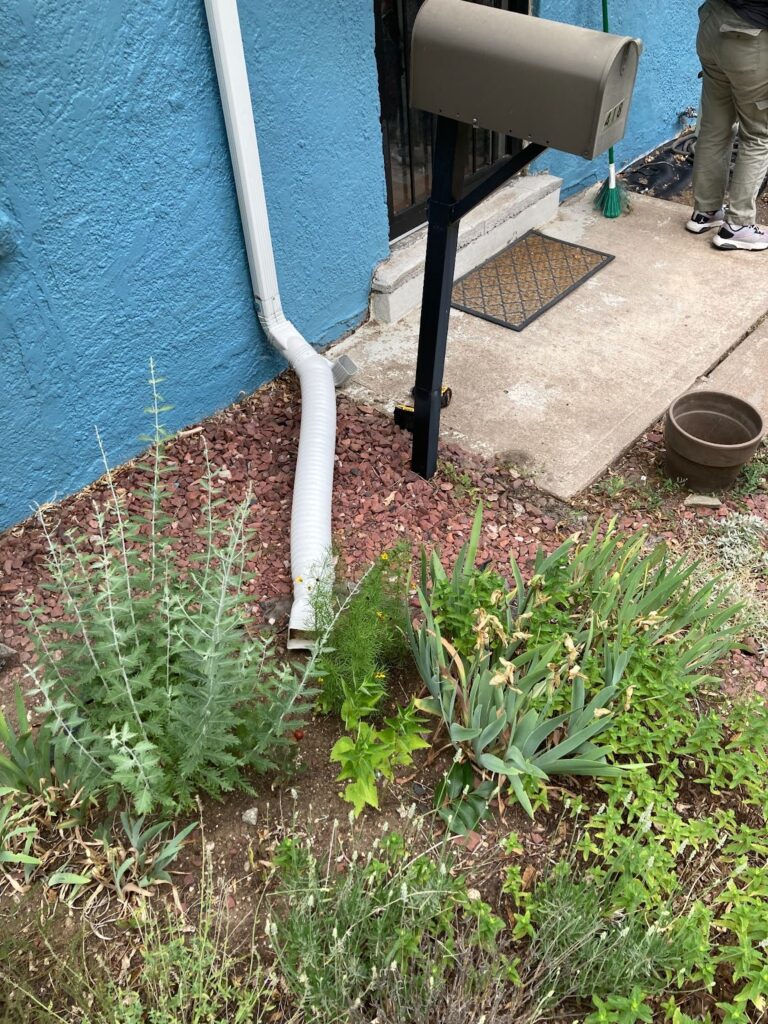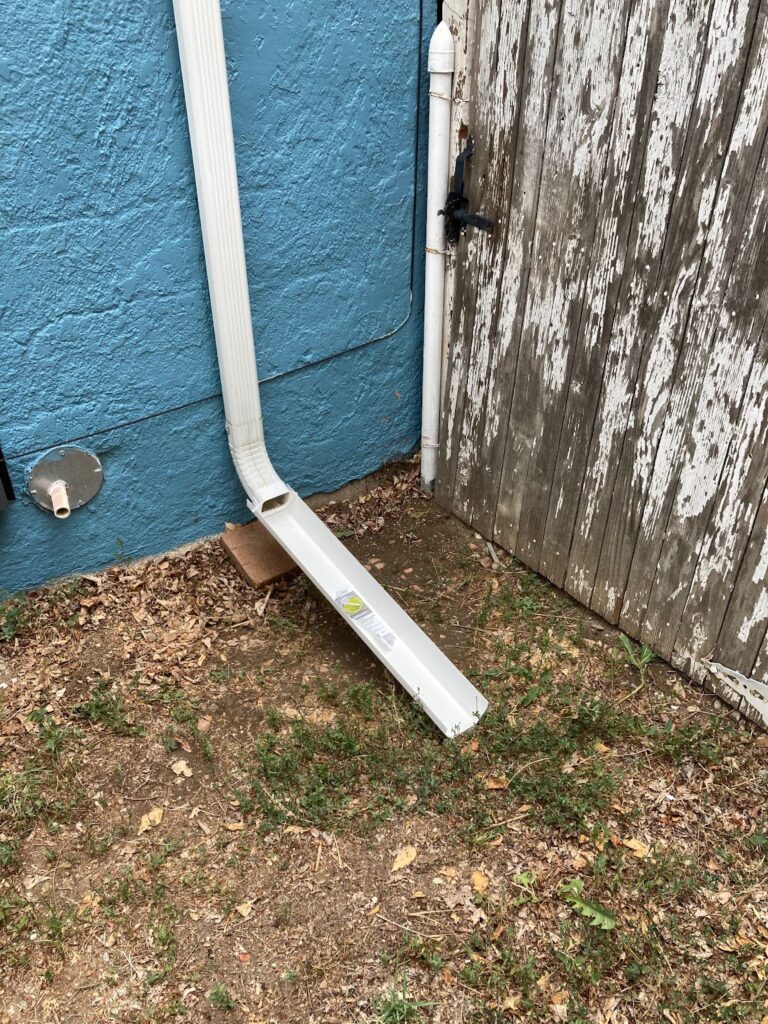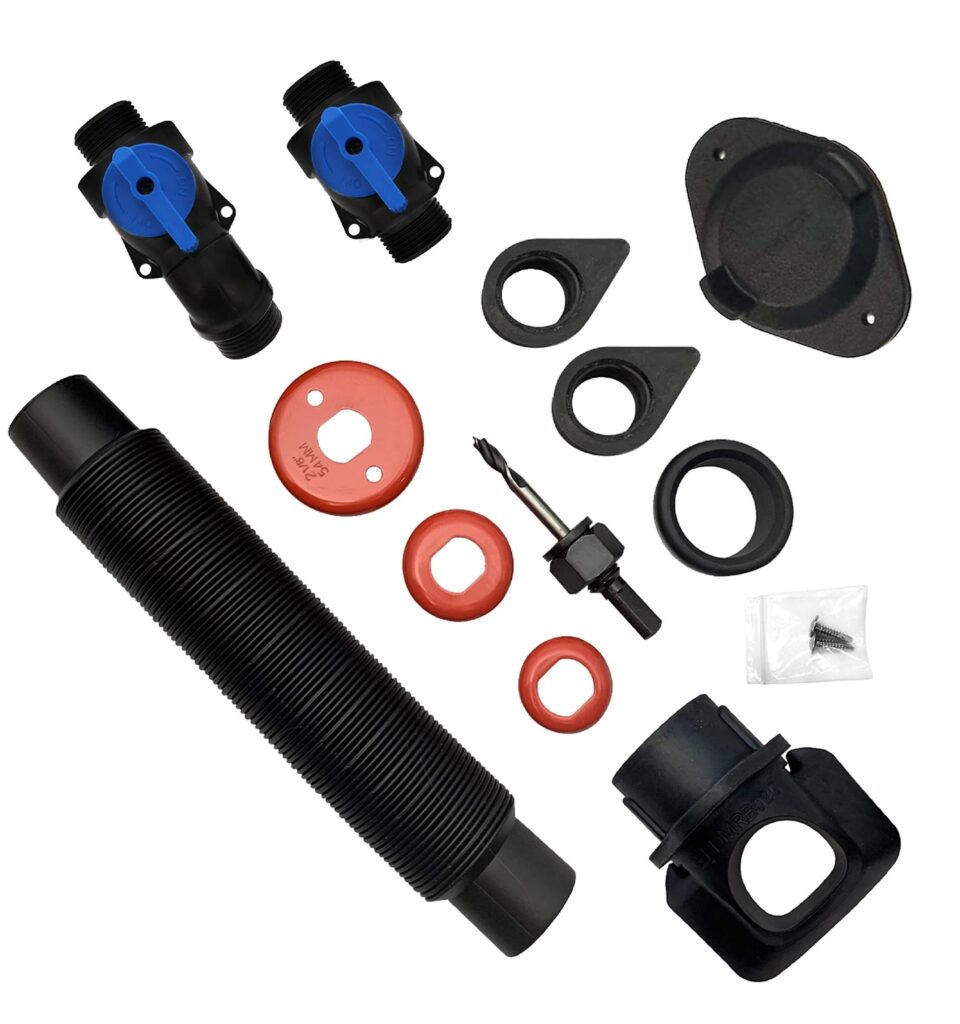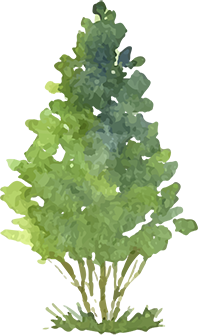Rainwater Harvesting Solutions

What Is It and Why Does It Matter?
Denver summers are getting hotter! We need more trees and plants to keep our neighborhoods cool. Rainwater can help—it’s free and can lower water bills!
Did you know?
Every year, about 10,000 gallons of rain, snow, and dew land on our roofs but wash away down storm drains. Instead of losing all that water, we can collect it and use it to water trees and flowers.
How does harvesting rainwater help?
- Saves money on water bills
- Keeps gardens healthy
- Conserves drinking water for everyone
- Reduces pollution in our streams
Our West Denver Rainwater Harvesting project is teaching people how to collect rainwater and use it to grow beautiful, shady, and cooler neighborhoods. 🌳💧
Would you like to start collecting rainwater at home? It’s easy and great for the planet! We have put together a list of video and web resources to help you get started harvesting rainwater right at home! There are several different ways to harvest rainwater, and the key is finding the right system to fit your yard and lifestyle.
Yes! Collecting Rainwater in Colorado is legal!
In 2016, the Colorado legislature amended laws to make it legal for residents to collect and store up to 110 gallons of rainwater on their property. That is two 55-gallon rain barrels per plot.
Learn more about the State Statute and common FAQS
- Colorado State University Extension Rainwater Collection in Colorado – https://extension.colostate.edu/docs/pubs/natres/06707.pdf
- Rainwater, Storm Water & Graywater from the Colorado Division of Water Resources – https://dwr.colorado.gov/services/water-administration/rainwater-storm-water-graywater
How to Install Downspout Redirects At Home
There are many DIY Guides to help you install downspouts at home; here are a few to get your started!
How to Redirect a Downspout
Lake Champlain Basin Program
https://www.lcbp.org/get-involved/learn/reduce-runoff/how-to-redirect-a-downspout/
Slow it Down and Soak it In: Disconnecting and Redirecting Your Downspouts
University of Maryland Extension
https://extension.umd.edu/sites/extension.umd.edu/files/publications/Downspout_ExtensionBrief.pdf
Downspout Redirects
Downspout Redirects attach to existing gutter systems on your home. They direct rainwater toward your plants and trees to support irrigation. This simple system takes advantage of natural rainfall, helping you conserve water and reduce your utility bills. It’s an eco-friendly solution that also helps prevent soil erosion and foundation damage by controlling where water flows.
Pros:
- Water conservation – Uses free rainwater instead of tap water for irrigation.
- Lower water bills – Reduces the need for hose or sprinkler use.
- Healthier plants – Rainwater is free of chlorine and other treatment chemicals.
- Prevents flooding – Helps direct water away from your home’s foundation.
- Easy to install – Most redirect systems are affordable and DIY-friendly.
Learn More:
Ask This Old House provides an overview about what to know about gutter downspouts, including how they work and the different types of downspouts on the market. Watch at Understanding Gutter Downspouts | Ask This Old House
Examples of downspout redirects:



Rain Barrels
Why Install a Rain Barrel (or two)?
A rain barrel helps save water and money by collecting rain that would otherwise run off your roof. In dry places like Denver and the Front Range, it gives you free water for your garden, even during droughts. It also helps keep rivers and lakes clean by reducing runoff, which can carry dirt and pollution into the water.
Choosing The Right Rain Barrel
Getting the right kind of rain barrel is important for keeping your plants healthy and keeping your system low-maintenance and long-lasting!**
A Plastic Rain Barrel with a Diverter is the best choice because they are:
- Easy to clean
- Simple to install
- Overflow water goes back into your existing downspout
- Easy to prepare for winter



Watch Out for These Rain Barrel Problems
Not all rain barrels are safe or easy to use. Here are a few things to look out for:
- Screens Can Cause Problems
- Some screens let in sunlight, which can cause algae to grow.
- If the holes are too big, bugs and dirt can still get in.
- Terracotta Planter Tops.
- These barrels may look nice, but the planter on top can collect water if it’s empty.
- Standing water = mosquito breeding ground!
- No Sealable Lid
- Rain barrels need a tight-fitting or screw-on lid.
- Without one, water and bugs can get in, and it’s harder to winterize.
- Winter Trouble
- Some barrels need extra work or to be put away in winter.
- You may need to add a downspout extender to keep water away from your home’s foundation.
Where Can I Buy A Rain Barrel?
New Rain Barrels and Diverter Kits are available at many general hardware and big-box stores. Below are resources on where you can find used** barrels in the Denver metro area.
- BlueBarrel Rainwater Catchment Systems: Provides a unique solution for multi-barrel rainwater catchment systems using locally sourced recycled barrels. They collaborate with food manufacturers and barrel recyclers across the state to make barrels available.
- Container Reclaimer: Offers a variety of 55-gallon poly barrels suitable for rainwater collection. Food-grade closed-top barrels and open-top versions are available.
- Colorado Rain Catcher: Offers upcycled 55-gallon rain barrels made from food-grade high-density polyethylene (HDPE). These barrels are durable and suitable for Colorado’s climate.
- Repurposed Materials Inc.:Sells used 55-gallon plastic bung barrels that previously stored food products like sauce bases and vinegar. These barrels are available in blue or white and are suitable for rainwater collection.
**Used Barrels can be used, but there are some important safety tips to keep in mind:
- Make sure it is food-safe.
- Clean it well before using it
- Do not use barrels that once held dangerous chemicals!
- Be careful when buying from Facebook Marketplace or Craigslist.
What is a Rain Garden? And Why Plant One?
A rain garden is a special garden that soaks up rainwater from roofs, driveways, and streets. It helps prevent flooding and keeps pollution out of rivers and streams. Rain gardens also grow beautiful flowers and give homes to birds and butterflies. Planting one helps the environment and makes your yard look great!
Design and Plant Lists:
- Rain Garden Design 50s sq ft Full Sun
- Rain Garden Full Sun Plant List
- Rain Garden Design 50s sq ft Part Sun
- Rain Garden Planting Layouts
- Colorado Rain & Edible Forest Garden Plant List
What is a Pollinator Garden? And why plant one?
Planting a pollinator garden in Denver and the Front Range helps bees, butterflies, and other insects that are losing their natural homes. These pollinators help plants grow fruits, vegetables, and flowers by spreading pollen. A garden with native plants also saves water and makes your yard more beautiful!
Design & Plant Lists:
- Pollinator Garden Plant Lists
- Pollinator Garden 50sq ft English
- Pollinator Garden 50sq ft Spanish
- Low Water Native Plants for CO Gardens
- Plant This Not That
- Native Plants for Pollinators and Beneficial Insects Rocky Mountains
- Low Water Native Plants for Pollinators
- Native Grasses to Colorado CSU Extensio




